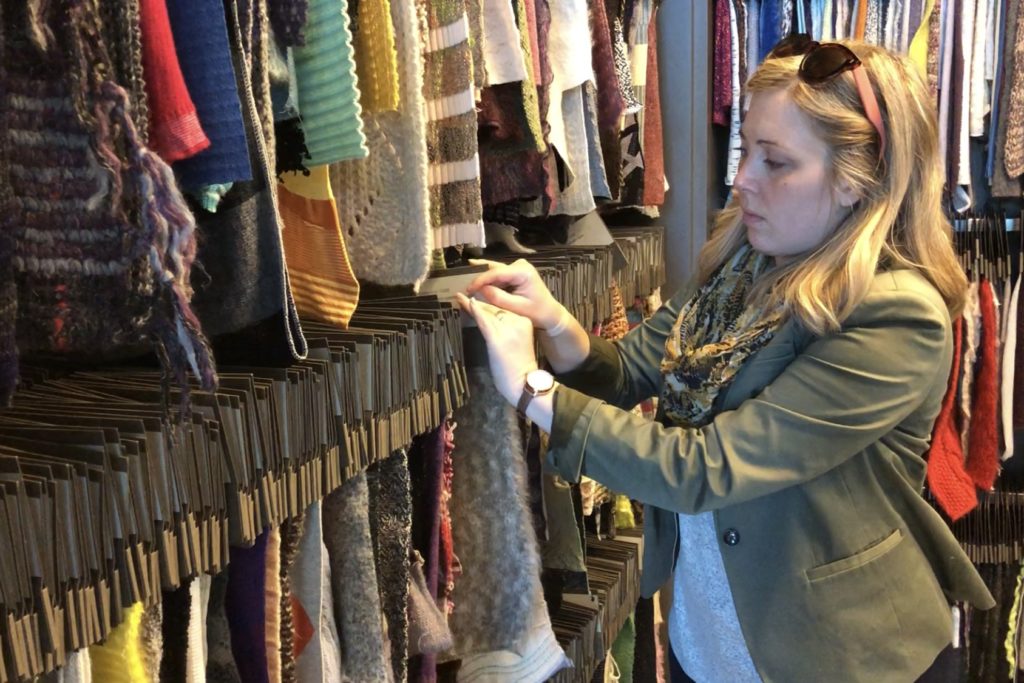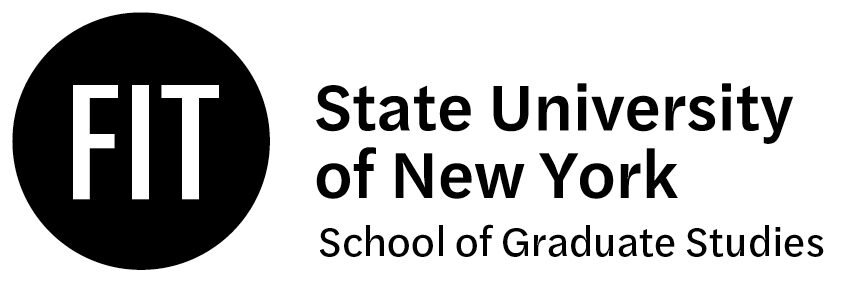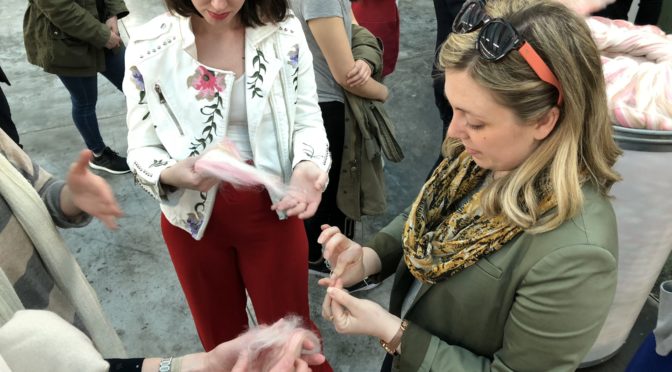By Michael Battista
Industry Coordinator to the Global Fashion Management Program
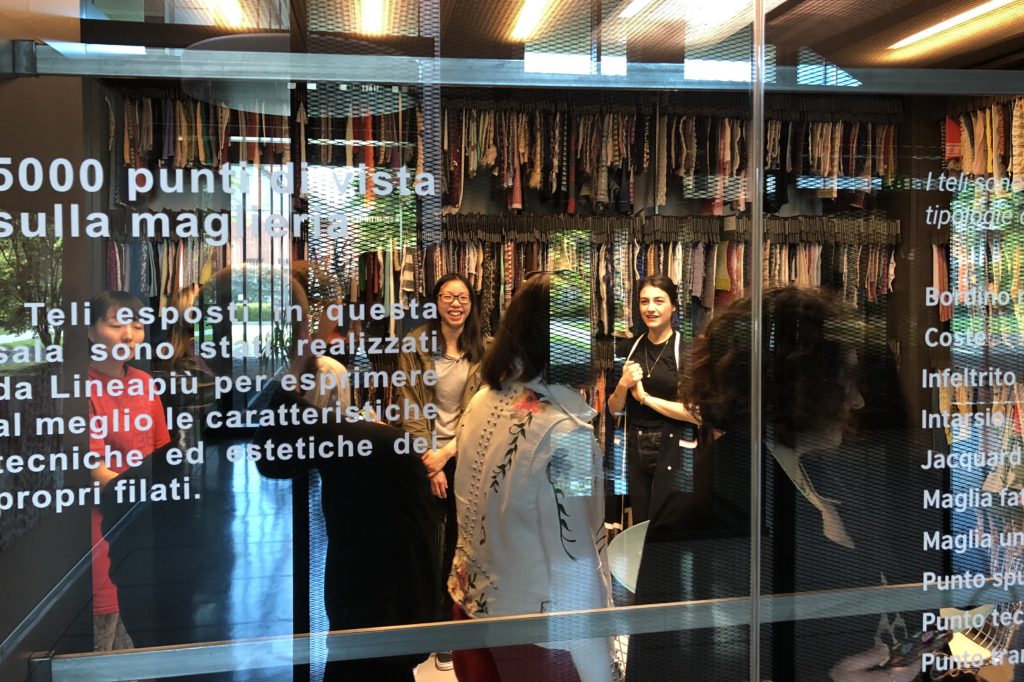
The apparel and fashion industry is complex and multifarious. With variables steeped in aesthetic and material culture that both affect and lie at the mercy of increasingly unpredictable and unstable economic and political forces, there are many learning opportunities to be had. In the case of our international seminars, we are on a journey–both in the pedagogical and literal sense–where students are confronted with connections that extend between and beyond the artistic, commercial, cultural, industrial, and political. These connections are not always obvious in the moment or on the road. Sometimes lucidity is attained after-the-fact, when the components and context of the whole experience is reflected upon.
Following the program’s recent Paris Seminar, such an opportunity presented itself in our pilot seminar in Florence, where we traveled to further enhance our understanding of luxury fashion, and to explore Italy’s connection to this sector. Since the Renaissance, Florence has been a renowned center for expertise in artisanal craftsmanship and the transformation of raw materials into high quality leather goods and textiles. This reputation endures to this day, with Italy serving as the number one source of France’s textile and leather imports. Of course, France has its own high quality fabric mills and leather tanneries, and certain cities have historically enjoyed reputations as epicenters of industry specialty: lace in Calais, linen in Normandy, and silk in Lyon. However, Made in France is expensive, even for those doing the making. While certain French luxury brands consistently earn annual profits between ten and over thirty billion dollars, for brands with tighter margins, the priority is product differentiation, quality, and skillfulness in production. The object of this affection is Made in Italy.
Our itinerary in Florence was developed and made possible with the expertise of the dynamic Pascal Gautrand, a textile specialist and developer of specialty trade shows Maison D’Exception and Made in France, and Founder of Made in Town, an online magazine, digital and consulting platform, and “manifesto to local fabrication.”
It was towards the end of our journey, on a visit to a specialty yarn producer nestled at the foot of the Tuscan hills, that we realized our own pilgrimage through luxury boutiques, ateliers, and production houses across France and Italy had been mirroring the journey of a value and supply chain. Back in Paris, at Chanel’s headquarters in the haute couture salon on Rue Cambon, students received an overview of the company’s fashion strategy and value chain from its tenet of client services to the craftsmanship in its famed métiers. After the lecture, we dispersed through the ready-to-wear boutique for a full merchandising experience and mise-en-scène of the flagship.
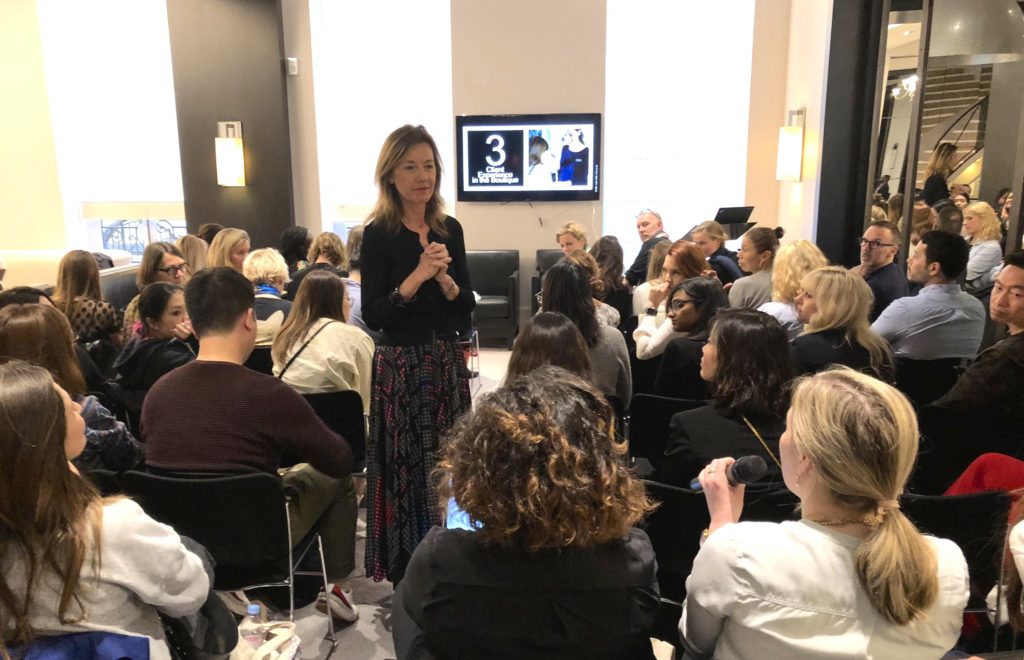
A few days later, we traveled to Normandy to visit luxury manufacturer Les Ateliers Grandis. Here, we saw what it means to be Made in France. The artisans worked meticulously at a methodical pace, constructing high-end garments for notable brands. Among them, we saw the making of jackets of a certain unmistakable tweed variety.
Onwards, in Florence, after many other exclusive executive lectures and site visits, by bus we ascended the meandering roads of the Tuscan countryside to tour the knitwear manufacturing facility of Il Borgo Cashmere, a small family-owned company established in 1949. Here, expertise and specialized machinery is leveraged to execute complex and unique orders of high-end luxury knitwear and home products for brands such as Chanel, Gucci and Loro Piana. Textured evidence of an iconic brand revealed itself on the production floor in a glimpse of a scarf emblazoned with an interlocking logo in a relief of cashmere thread. Afterwards, in a final step towards the source of the supply chain we had been following, we returned to Florence to visit a material supplier of Il Borgo Cashmere.

We descended from the Tuscan hillside to the historical archives and spinning mill of Lineapiù Italia, a creator of rare and exceptionally fine yarns since 1975. “Creator” is the most apt word to encapsulate the distinctness of their offering: technical expertise in manufacturing, research and development of innovative materials; and a resource for designers of high-end knitwear.
We were welcomed into the company’s Museum by archivist Chiara Petruccelli, a luxury native and textile savant formerly with the archives of Gucci, and credentialed in conservation at the University of Florence. True to form in Italian hospitality, with sweeping hand gestures she pointed out details of historical and technical significance as we were guided through the textile and swatch library, a designer garment collection, and a “stitch room” for design research. Amongst so many intriguing textures and surfaces, the curiosity of our group was irrepressible. No question went unanswered, and thankfully, “no touching” was not part of the lingua franca here. Afterwards, we were lead on a short walk through the company’s campus to tour the spinning facility where specialty fibers such as mohair, alpaca, and cashmere, among others, are transformed into yarns destined for the production of storied luxury brands such as Armani, Chanel, Christian Dior, Givenchy, Hermès, Louis Vuitton, Valentino, and many others.
In the production of truly luxurious knitwear, all yarns are not created equal. Simply touting a composition of a noble fiber–such as cashmere, for example–is not enough. Further steps must be made to distinguish the basic and banal from the exceptional. While Lineapiù certainly uses premium raw materials, it excels in market competitiveness with its scientific method, artistic approach and penchant for whimsy.
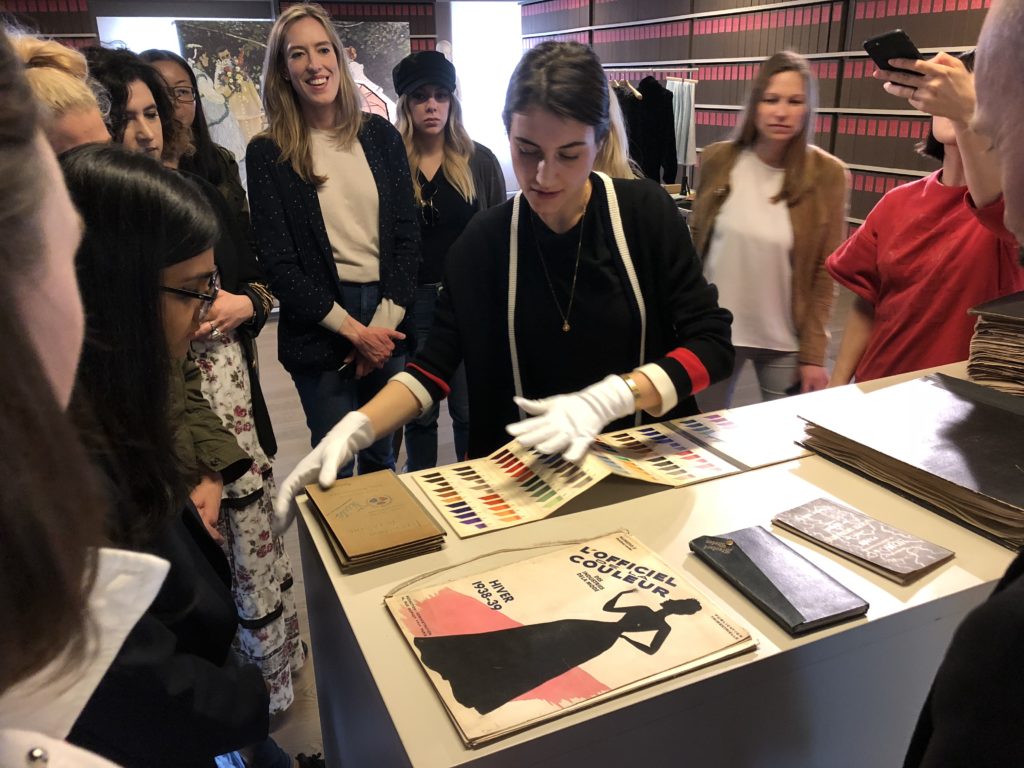
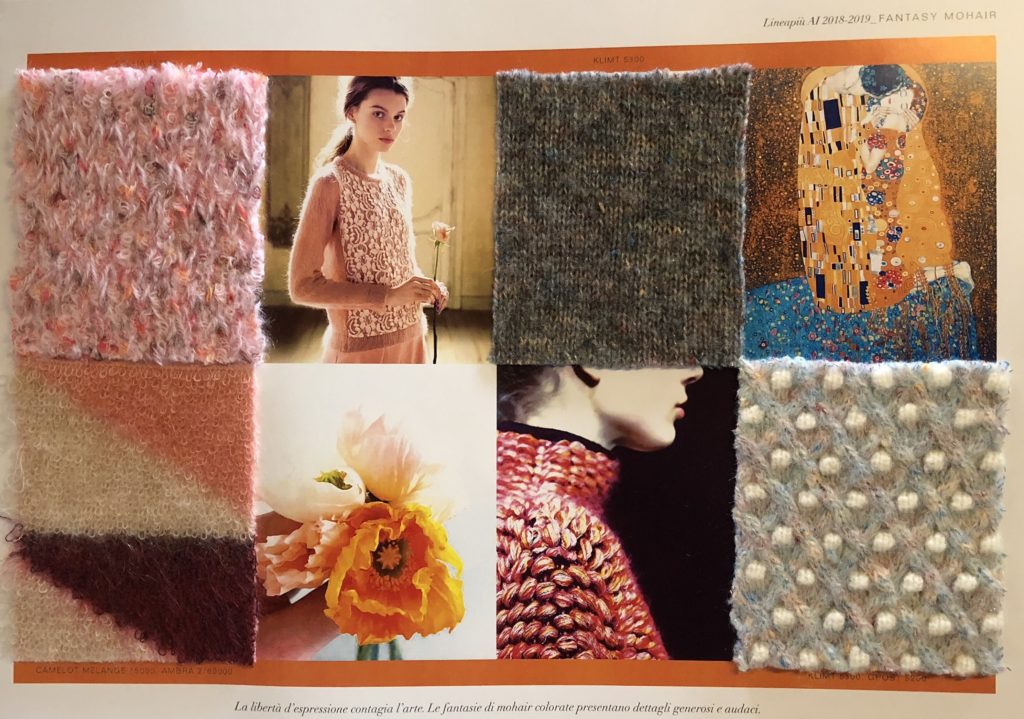

Laurels are not rested on here. Innovation and development are tirelessly pursued. The entire research, development, and manufacturing process–including combing, carding, twisting, dyeing, and finishing–is carried out in its own laboratory and mills.
Yarn is designed and created in three categories of collections that coincide with the two primary seasons of the fashion calendar. In addition to three ready-to-knit lines, it offers clients bespoke production services to create exclusive yarns. Yarns are engineered from the inside out, composed from a selection of natural, manufactured, and synthetic fibers that are precisely blended and constructed to express the tactile, aesthetic or technical qualities desired. Yarn structure can have a traditional twist or a more complex design: employing certain fibers as scaffolding for encasement, or as a lattice for a garden of embellishment. A multitude of variations achieve the desired hand, strength, weight, texture, sheen, breathability, color intensity, and capacity to retain heat, among other features. From the ultra-soft and lightweight, to luminous and striated surfaces that intimate their inspirations. The results are as artful and original as they are scientific. Whether they are “mélanges inspired by mushrooms, lichens, the earth and leaves ruffled by impetuous winter’s winds” (as their fall-winter 2019/2020 season of its Knit Art collection is described) or made with filaments of carbon fiber that shield its wearer from electromagnetic radiation (the yarn named Relax, released in 1990).
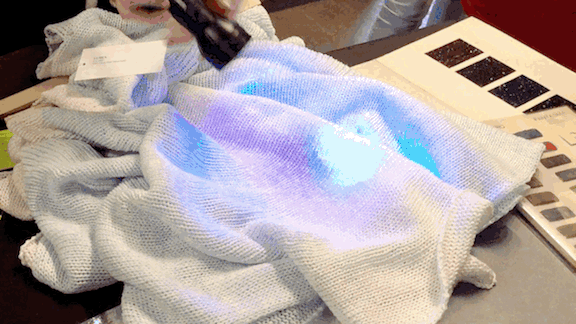
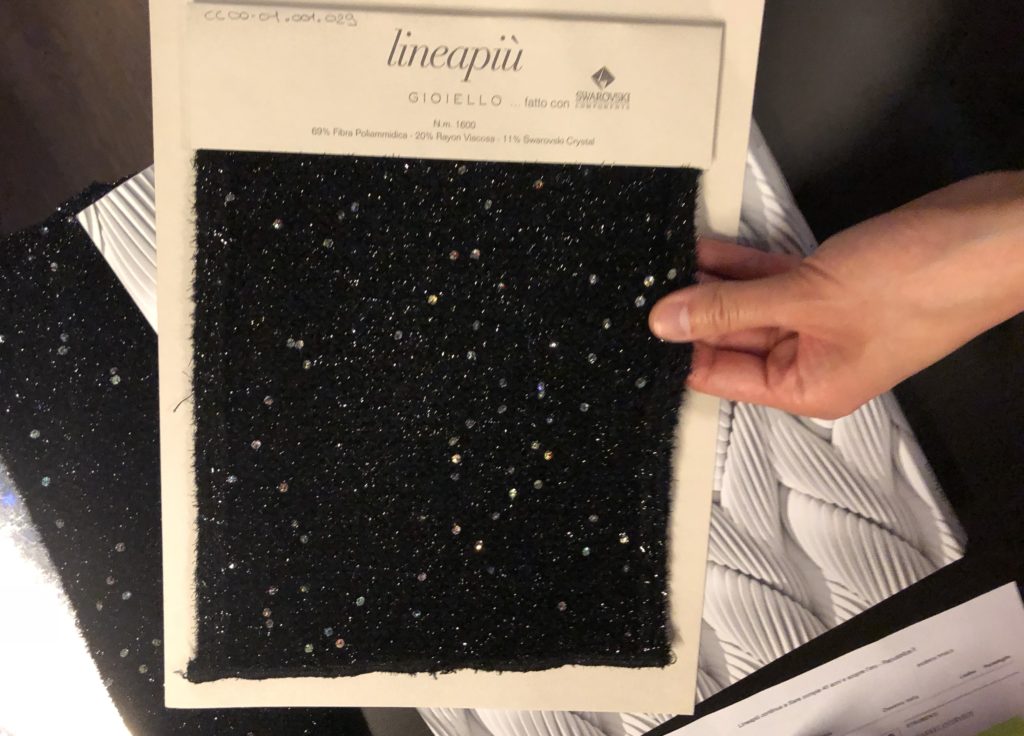
What was demonstrably clear from our visit is that Lineapiù Italia is an enterprise with an innovative spirit in full command of its capabilities. Unfortunately for us, of all the components of luxury surrounding us, time was not one of them. Transfixed as we were by this immersion into specialty yarn production, we required prodding to depart and board our bus. We had a schedule to keep, after all, and our lives in New York to return to.
We study this industry from the vantage point of our offices and classrooms, with troves of data, articles, resources in databases, and lectures by executives and intellectuals. Yet, to physically arrive at this point in the process, to the source of luxury, in a facility at the foot of the Tuscan hills, to run our hands through strands of alpaca and cashmere fibers in hues of hot pink and cream destined for the type of garment that might be on display in a Parisian boutique, fully rendered the intricacies of supply and value chains into a tangible experience that was both grand and granular. Whatever your expertise or experience is, if you’re going to study an industry as complex as apparel, you can expect to be confronted with limitless opportunities to discover connections and learn something new. To get out of the classroom and into the world to experience these connections through our own hands and eyes, we could at least now be 100% certain of the quality and specialized skill that is Made in France and Made in Italy.
